Peanut butter is a pantry hero, perfect for everything from quick snacks to hearty breakfasts. But not all jars are created equal – the healthiest ones skip the extra sugars and oils, sticking to just peanuts or a touch of salt. Packed with protein, healthy fats, and a bit of fiber, these spreads can keep you full and support a balanced diet. Whether you’re smearing it on toast or blending it into a smoothie, picking a nutritious option makes all the difference.
A little overwhelmed by the choices? No worries – it’s easier than you think to spot the good stuff. With our ReciMe app, you can save your favorite peanut butter recipes from the web or your own notes, organize them into collections, and even plan your meals for the week. Its smart grocery lists sort ingredients by aisle, so grabbing that perfect jar and some apples for a snack is a breeze. Keep your kitchen humming with ideas that make healthy eating simple and fun.

Download for free from the App Store on iPhone and iPad

ReciMe Android App
How to Pick the Perfect Peanut Butter for You
Finding the right peanut butter is like picking the perfect playlist – it’s gotta match your vibe. The healthiest ones keep it simple, with just peanuts or maybe a pinch of salt, skipping the extra sugars or oils that can sneak in. If you’re trying to keep sodium low, look for options with less than 100 mg per serving – some even have none, which is great for heart-healthy eating. Love a sweet kick? Go for one with minimal added sugar, ideally under 5 g, to avoid the candy-bar vibe of some flavored spreads. Creamy spreads are awesome for smoothies or sandwiches, while chunky adds a satisfying crunch for snacks like apple slices. Budget matters too – there are solid picks that won’t empty your wallet, but pricier organic ones can be worth it if that’s your thing. Natural peanut butters often separate, so a quick stir is part of the deal, or store the jar upside down to make it easier. Check the label to make sure it’s not loaded with additives, and you’re good to go for whatever you’re cooking up.
Why Peanut Butter Is a Nutritional Powerhouse
Peanut butter is like that friend who’s always got your back – it’s packed with good stuff that keeps you going. A couple of tablespoons give you a solid dose of protein, around 7-9 g, perfect for fueling a busy day or a workout. It’s also loaded with healthy fats that are kind to your heart, helping to keep bad cholesterol in check while making you feel full for longer. You’ll get a bit of fiber too, which helps with digestion, plus some bonus vitamins like E and magnesium for overall health. The catch is keeping portions in check – stick to about 2 tablespoons a day to avoid piling on the calories, which can add up fast. There’s no cholesterol or trans fats, and the small amount of saturated fat fits fine within a balanced diet. Whether it’s stirred into oatmeal or spread on toast, peanut butter’s a tasty way to sneak in nutrition without much effort.
Top Healthiest Peanut Butters
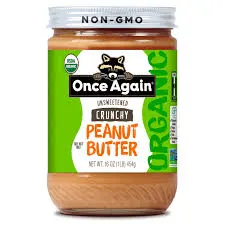
1. Once Again Lightly Salted Peanut Butter
This peanut butter keeps it real with just organic peanuts and a touch of salt. It’s got a rich, roasted flavor that’s not too sweet, and the texture is smooth enough to spread easily after a quick stir. Sourced ethically from places like Nicaragua and the USA, it’s a solid pick for those who care about quality and the planet. The glass jar is a nice touch, reusable for storing leftovers or even as a vase for fresh flowers.
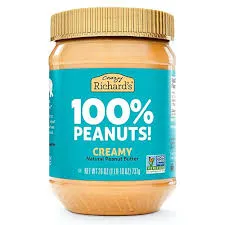
2. Crazy Richard’s 100% Peanuts Natural Peanut Butter
Made with nothing but peanuts, this one’s a favorite for its straightforward approach. It’s creamy or crunchy depending on your mood, with a bold peanut taste that shines through without any extras. It might need a good stir to mix in the natural oils, but that’s a small price to pay for a spread that’s pure and packed with protein. Keep it in the fridge to avoid it getting too runny.
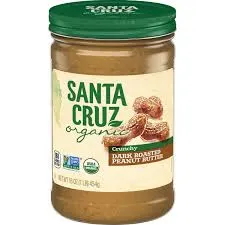
3. Santa Cruz Organic Peanut Butter
Organic roasted peanuts and a smidge of salt – that’s all you’ll find here. It’s Non-GMO Project Verified, which is great for those who want clean ingredients. The creamy texture spreads like a dream, making it a go-to for smoothies or sandwiches. It’s a bit pricier, but the quality makes it worth considering.
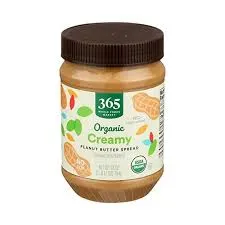
4. 365 Organic Creamy Peanut Butter
For those watching their sodium, this Whole Foods gem has zero salt, just organic dry-roasted peanuts. It’s affordable and Kosher-certified, with a smooth texture that needs a stir to blend the oils. Perfect for anyone who wants a no-fuss, budget-friendly option that still delivers on nutrition and taste.
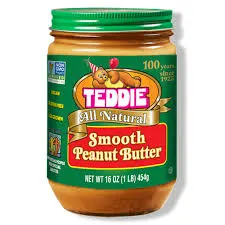
5. Teddie All Natural Peanut Butter
Available in smooth or super chunky, this one’s a crowd-pleaser with just peanuts and salt. It’s got a rich, nutty flavor that earned high praise in taste tests, and it’s easy on the wallet. This version contains 0 mg of sodium, making it an excellent choice for low-sodium diets. It’s a solid choice for dipping apple slices or spreading on toast.
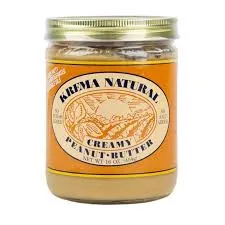
6. Krema Natural Creamy Peanut Butter
Using only top-grade Spanish peanuts, this peanut butter skips salt entirely, making it ideal for low-sodium diets. It’s been made the old-fashioned way for over a century, so they’ve got the recipe down pat. It might be tricky to find in stores, but ordering online is an option. The creamy texture and clean ingredient list make it a standout.
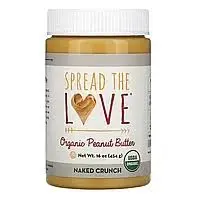
7. Spread The Love Naked Organic Peanut Butter
With just one ingredient – organic peanuts – this peanut butter is as pure as it gets. It’s creamy, slightly runny, and has a rich taste that’s great for drizzling over fruit or mixing into recipes. It’s on the expensive side, but the organic certification and award-winning flavor make it a favorite for those who prioritize quality.

8. Smucker’s Natural Creamy Peanut Butter
This one’s a classic, made with peanuts and a bit of salt. It’s super spreadable, perfect for sandwiches or snacks, and widely available at a decent price. The sodium’s a tad higher than some, but it’s still within a reasonable range. Pair it with fruit or use it in baking for a reliable, no-nonsense option.
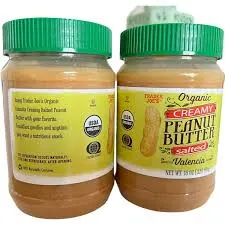
9. Trader Joe’s Creamy Salted Peanut Butter
Affordable and flavorful, this peanut butter uses dry-roasted peanuts ground with their skins for extra taste. It’s got just two ingredients – peanuts and salt – but the sodium is a bit higher than ideal. Still, it’s a great value for everyday use, especially if you’re near a Trader Joe’s. A quick stir keeps it smooth.
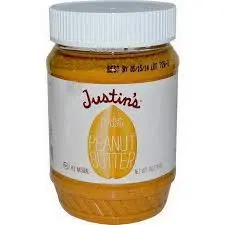
10. Justin’s Classic Peanut Butter
This one includes sustainably sourced palm oil to keep it spreadable without stirring, alongside dry-roasted peanuts. It’s low in sodium and has a pleasant roasted flavor. While palm oil isn’t the top choice for everyone, it’s used thoughtfully here, and the convenience is hard to beat. Great for those who want a hassle-free spread.
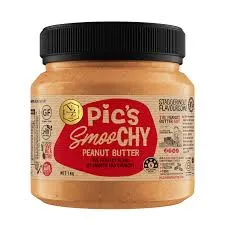
11. Pic’s Smoochy Peanut Butter
A unique “not too smooth, not too crunchy” texture makes this one stand out. Made with hi-oleic peanuts and no added sugars or oils, it’s low in sodium and high in protein. It might require ordering online, but the quirky vibe and clean ingredients make it worth the effort for something a little different.
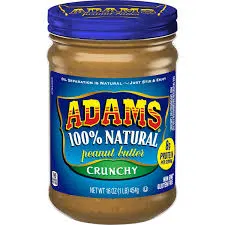
12. Adam’s 100% Natural Peanut Butter
Around since 1922, this peanut butter sticks to peanuts and a tiny bit of salt. The crunchy version keeps sodium just under the recommended limit, while the creamy is slightly over. It’s affordable, comes in eco-friendly glass jars, and needs a stir, but the classic flavor makes it a pantry staple for many.
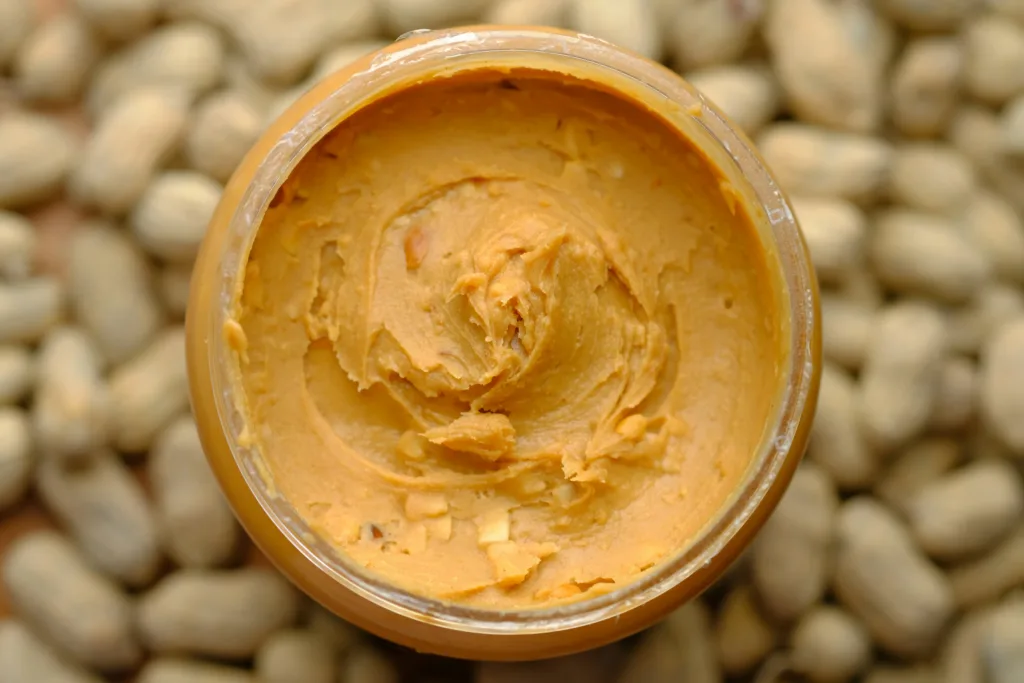
Creative Ways to Use Healthy Peanut Butter in Your Kitchen
Peanut butter’s a total champ in the kitchen, way beyond just slathering it on bread. It’s got that nutty, creamy goodness that can jazz up breakfast, snacks, or even dinner with minimal effort. Whether you’re tossing it into a quick dish or getting fancy, healthy peanut butter – the kind with just peanuts or a bit of salt – makes meals tastier and more filling. Here are some fun, easy ways to put it to work, perfect for keeping your recipe game fresh.
- Blend it into a smoothie: Mix a spoonful with banana and spinach for a creamy, protein-packed breakfast that’s ready in minutes. It’s a great way to kick off the day with something nutritious
- Whip up overnight oats: Stir it into oats with berries or a drizzle of honey for a grab-and-go meal that’s waiting for you in the morning. Super simple and keeps you full
- Make energy balls: Roll it with oats and chopped dates for bite-sized snacks that curb hunger on busy days. They’re perfect for stashing in your bag
- Add it to a curry sauce: Stir a bit into a veggie or tofu curry for a rich, nutty flavor that makes dinner feel special without much work
- Drizzle over fruit: Spoon it over apple slices or bananas for a quick dessert or snack that’s sweet, crunchy, and satisfying. Pairing it with fruit keeps things balanced
These ideas are just a start – save your favorite peanut butter recipes from online or scribbled notes, and plan them out to keep your kitchen humming with flavor.
Conclusion
Peanut butter’s a kitchen staple that brings both flavor and nutrition to the table. The healthiest kinds keep it simple, using just peanuts or a hint of salt, and pack protein, healthy fats, and fiber to keep you full and energized. Whether spread on a morning bagel, blended into a smoothie, or stirred into a savory sauce, these spreads make healthy eating feel like a treat. Checking labels for minimal ingredients and sticking to small portions ensures you get the benefits without overdoing it. It’s an easy way to add a nutritious punch to meals or snacks, so grab a jar and start experimenting in the kitchen!
FAQs
1. What should you look for in a healthy peanut butter?
A healthy peanut butter has as few ingredients as possible – ideally just peanuts or peanuts with a touch of salt. Avoid ones with added sugars, hydrogenated oils, or preservatives, which can add extra calories and fats you don’t need. Aim for low sodium, under 100 mg per serving, to keep it heart-friendly. Checking the label helps you pick a spread that’s nutritious and tastes great.
2. Are reduced-fat peanut butters a good choice?
Reduced-fat peanut butters might seem healthier, but they often swap out good fats for extra sugar or salt to boost flavor, which can make them less satisfying. The healthy fats in full-fat natural peanut butters are better for keeping you full and supporting heart health, as long as you stick to a small serving. It’s usually best to go for the real deal over low-fat versions.
3. How do you handle the oil that separates in natural peanut butters?
Natural peanut butters often have oil on top since they don’t use stabilizers like palm oil. Just stir it back in before using to get a smooth texture. Storing the jar upside down in the pantry can help the oil settle at the bottom, making it easier to mix when you open it. Keep it in the fridge after stirring to maintain that spreadable consistency.
4. How much peanut butter is okay to eat each day?
Peanut butter’s calorie-dense, so a little goes a long way – about 2 tablespoons a day is plenty to get the protein and fats without overloading on calories. Pairing it with something high in fiber, like whole-grain bread or fruit, makes it a balanced snack or meal. Keeping portions in check lets you enjoy the flavor and nutrition without going overboard.
